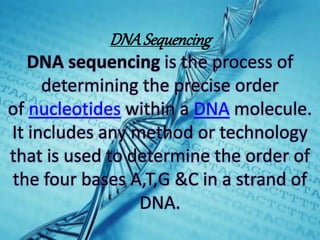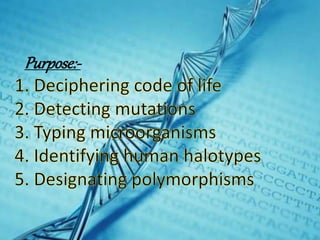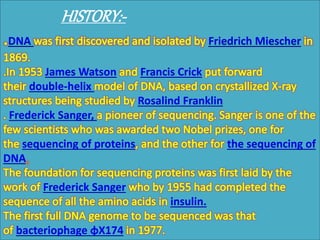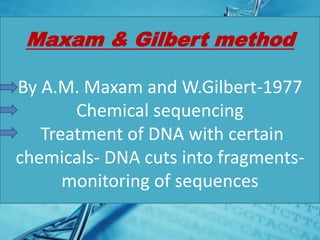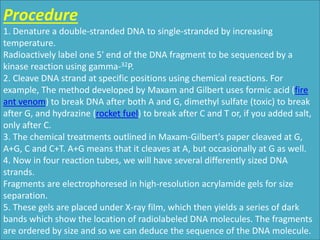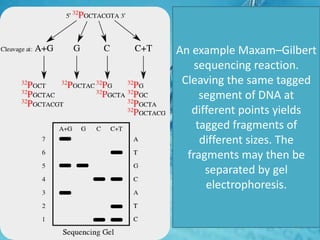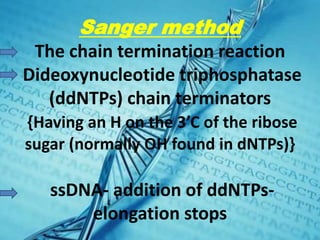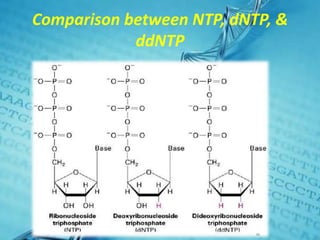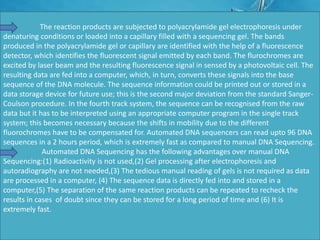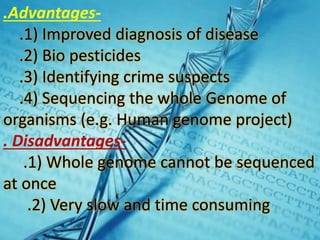DNA sequencing is a process to determine the order of nucleotides in a DNA molecule. It was discovered in the 1970s by scientists like Frederick Sanger who developed the chain termination method. This method involves DNA replication with modified nucleotides that cause the growing DNA strand to terminate at that point. The fragments are then separated by size to reveal the sequence. Automated sequencing now uses fluorescent dyes and capillary electrophoresis for faster and higher throughput sequencing. DNA sequencing has applications in medicine, forensics, and agriculture.




